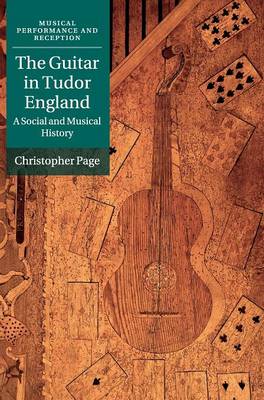Musical Performance and Reception
2 total works
This is the first history of the guitar during the reign of the Stuarts, a time of great political and social upheaval in England. In this engaging and original volume, Christopher Page gathers a rich array of portraits, literary works and other, previously unpublished, archival materials in order to create a comprehensive picture of the guitar from its early appearances in Jacobean records, through its heyday at the Restoration court in Whitehall, to its decline in the first decades of the eighteenth century. The book explores the passion of Charles II himself for the guitar, and that of Samuel Pepys, who commissioned the largest repertoire of guitar-accompanied song to survive from baroque Europe. Written in Page's characteristically approachable style, this volume will appeal to general readers as well as to music historians and guitar specialists.
Few now remember that the guitar was popular in England during the age of Queen Elizabeth and Shakespeare, and yet it was played everywhere from the royal court to the common tavern. This groundbreaking book, the first entirely devoted to the renaissance guitar in England, deploys new literary and archival material, together with depictions in contemporary art, to explore the social and musical world of the four-course guitar among courtiers, government servants and gentlemen. Christopher Page reconstructs the trade in imported guitars coming to the wharves of London, and pieces together the printed tutor for the instrument (probably of 1569) which ranks as the only method book for the guitar to survive from the sixteenth century. Two chapters discuss the remains of music for the instrument in tablature, both the instrumental repertoire and the traditions of accompanied song, which must often be assembled from scattered fragments of information.

